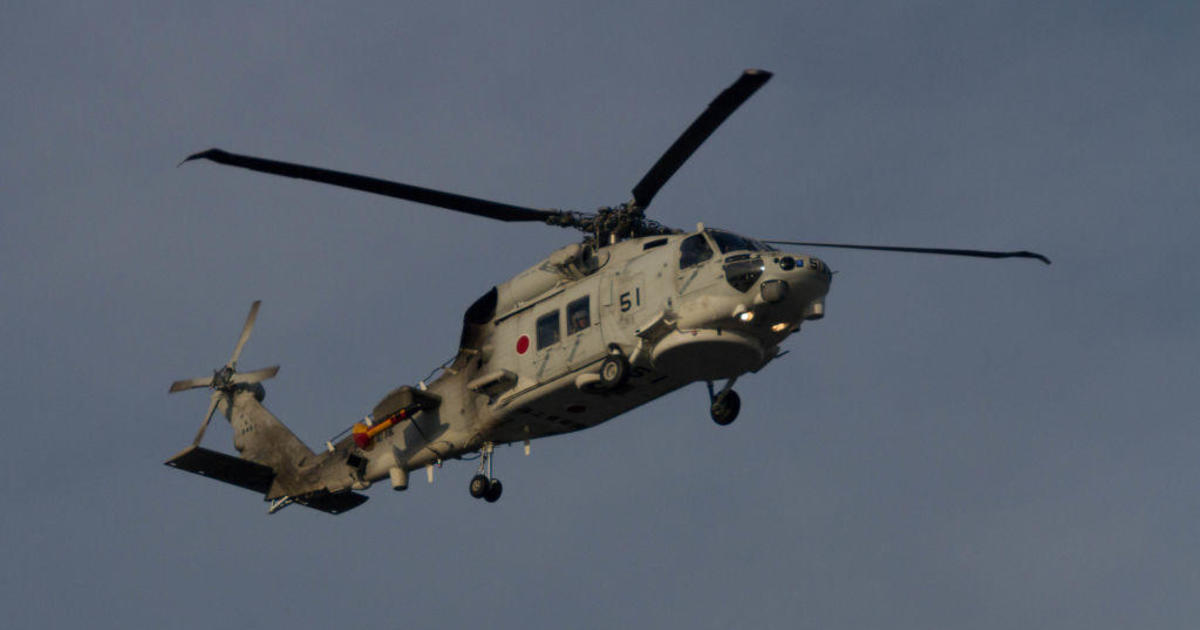North Korea missile might reach U.S., but can it land?
SEOUL, South Korea -- North Korea after decades of effort has a missile potentially capable of reaching the continental United States, but analysts say Pyongyang has yet to show the ICBM can inflict serious damage once it gets there.
U.S. and South Korean experts on Tuesday said Japanese video footage capturing the Hwasong-14's re-entry vehicle shortly before it crashed into the sea suggests it failed to survive the extreme heat and pressure after re-entering the Earth's atmosphere following its launch from northern North Korea on Friday.
But the apparent failure likely means the North will conduct more flight tests of the Hwasong-14 missile to ensure the warhead could survive the re-entry from space and hit its intended target, the analysts said.
- Trump on North Korea: "It will be handled"
- China says U.S., North Korea bear "primary responsibility" to ease crisis
- What are the non-military options to deal with North Korea?
The Hwasong-14 ICBM, which was first tested on July 4, follows decades of effort by North Korea to obtain a nuclear deterrent against the United States. Analysis of the flight data from Hwasong-14's second test has suggested that more of the U.S. mainland, including Los Angeles and Chicago, is now in range of Pyongyang's weapons.
But the biggest question remaining about North Korea's aggressive nuclear weapons program is when the rogue state will be able to build a nuclear warhead small enough to fit onto an ICBM -- and make an ICBM that can not only fly far enough, but also deliver its payload back into the Earth's atmosphere without incinerating.
After analyzing video from a rooftop camera operated by Japan's NHK television on the northern island of Hokkaido, U.S. missile expert Michael Elleman concluded that Hwasong-14's re-entry vehicle "disintegrated" before it landed at sea.
In an article posted at the 38 North website, Elleman said the video showed the re-entry vehicle shedding small radiant objects at an altitude of 2.5 to 3 miles. He said the re-entry vehicle dims and quickly disappears at an altitude of 1.9 to 2.5 miles before it passes behind a mountain range and is obscured from the camera's view. Had the re-entry vehicle survived, it would have continued to glow until disappearing behind the mountains, Elleman said.
"In short, a reasonable conclusion based on the video evidence is that the Hwasong-14's re-entry vehicle did not survive during its second test," said Elleman, an expert with the International Institute for Strategic Studies. "If this assessment accurately reflects reality, North Korea's engineers have yet to master re-entry technologies and more work remains before Kim Jong Un has an ICBM capable of striking the American mainland."
Granted, it's impossible to know how the warhead would have performed if North Korea had launched the missile for real. Both ICBMs were test-launched at highly lofted angles to reduce the range and avoid neighboring countries, and the near-vertical flight paths meant the re-entry vehicles endured harsher conditions during their descents.
But Kim Dong-yub, a defense analyst at the Institute for Far Eastern Studies at Kyungnam University in Seoul, said it's obvious North Korea has yet to reach where it wants to be with re-entry technologies.
While North Korea has declared that the Hwasong-14's latest launch confirmed important features of the missile, such as its range and the warhead's atmospheric re-entry, it also described the rocket as "landing in the target waters in the open sea." That probably wasn't an ideal outcome for North Korean engineers because nuclear warheads are usually designed to detonate at lower altitudes shortly before impact, Kim said.
"Considering the cost and efforts they put into tests, North Korea likely would have tried to detonate the warhead properly; they apparently failed this time, but could focus on this aspect in future tests," Kim said.
Mastering warhead re-entries would be one of the most critical military milestones the North has left, along with developing a submarine-launched ballistic missile system and solid-fuel ICBMs, Kim said.
So how long might it take North Korea to clear the remaining hurdles to obtain a nuclear weapon with the United States in range?
The best guess right now is months, not years.
The U.S. intelligence community believes the North could have a reliable intercontinental ballistic missile (ICBM) capable of carrying a nuclear warhead by sometime next year, U.S. intelligence officials told CBS News in July.
The military's Defense Intelligence Agency (DIA) drew the stark conclusion in a classified report for the government, as first reported by The Washington Post. The new assessment shortened the United States' predicted timescale of Kim's quest for a nuclear weapon capable of reaching the United States by a full two years.
While not speaking directly of the classified report, an official from the office of the Director of National Intelligence acknowledged to CBS News that North Korea's recent successful ICBM test launch represented "one of the milestones that we have expected would help refine our timeline and judgments on the threats that Kim Jong Un poses to the continental United States."
President Trump has vowed to prevent the North from developing the technology Kim Jong Un is working so feverishly toward, but as CBS News' Julianna Goldman reported on Monday, he has fewer options -- without resorting to military conflict that could throw the entire region into chaos -- to deal with the rogue nation by the week.



